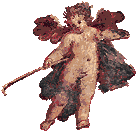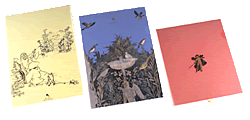|
During the Nara Period, Emperor Shomu ordered Japan's capital transferred to Shigaraki and issued an imperial edict to construct the Great Buddha. This was the beginning of Shigaraki's long history. Eventually, the capital was moved to Nara, where the Great Buddha was unveiled in a grand ceremony at the Todaiji Temple. Yet, for a brief time, Shigaraki was the capital of Japan.
Through recent archaeological surveys, we now know that ceramic tiles were used to cover the roof of the Koga Temple, built at the onset of the construction of the new capital. Whether or not these tiles were actually fired in Shigaraki, or ceramic production there originated with the construction of the capital in the Nara Period, there is no doubt the ceramic industry flowered in the region soon afterwards.
In medieval times, ceramic ware became very popular throughout Japan, and great centers of production such as Tokoname kiln flourished. The six old kilns were particularly famous. Shigaraki, where the last of the medieval kilns were located, was among these great centers. Strongly influenced by Tokoname kiln, the ceramic industry in Shigaraki is believed to have reached maturity during the late 13th to the early 14th century, in the Kamakura Period.
The ceramics of medieval Shigaraki had been unglazed. Solid clay was exposed to flames for long periods. The creation of these objects mirrored the creation of the world, which also involved the fierce confrontation of elemental forces and the fusion of water, clay, and fire. A wide assortment of ware emerged from the flames of the Shigaraki kilns and they exhibited a vast range of expressions. On many works, the scorched surfaces appear to be dripping and on some a natural glaze forms that is a shade of fresh green, making the dripping patterns look like a waterfall flowing down toward the base.
In other works, there is rich contrast among various shades of deep orange and red. The rough texture of some surfaces recalls a cold and dry field that has been blown by the wind and rain. There can be specks of feldspar spread over the face of a piece, each resembling a crab's eye. The seemingly infinite variety of visual expression that achieved by individual potters reflects something of the infinite variety of beauty in Shigaraki jars. As with the seasonal beauty of Shigaraki, these ceramics too are a fusion of nature, forged from earth and flame.
This exhibition includes eight works, that will be returned to Shigaraki from foreign countries especially for this show, along with over 180 other works, some of which have never been exhibited before.
Savor the beauty of medieval Shigaraki ware accented by the contours of the mountains in a rich brocade of fall colors. And on a clear night, if you are fortunate, you may see the skies graced with the luster of the Milky Way.
|











